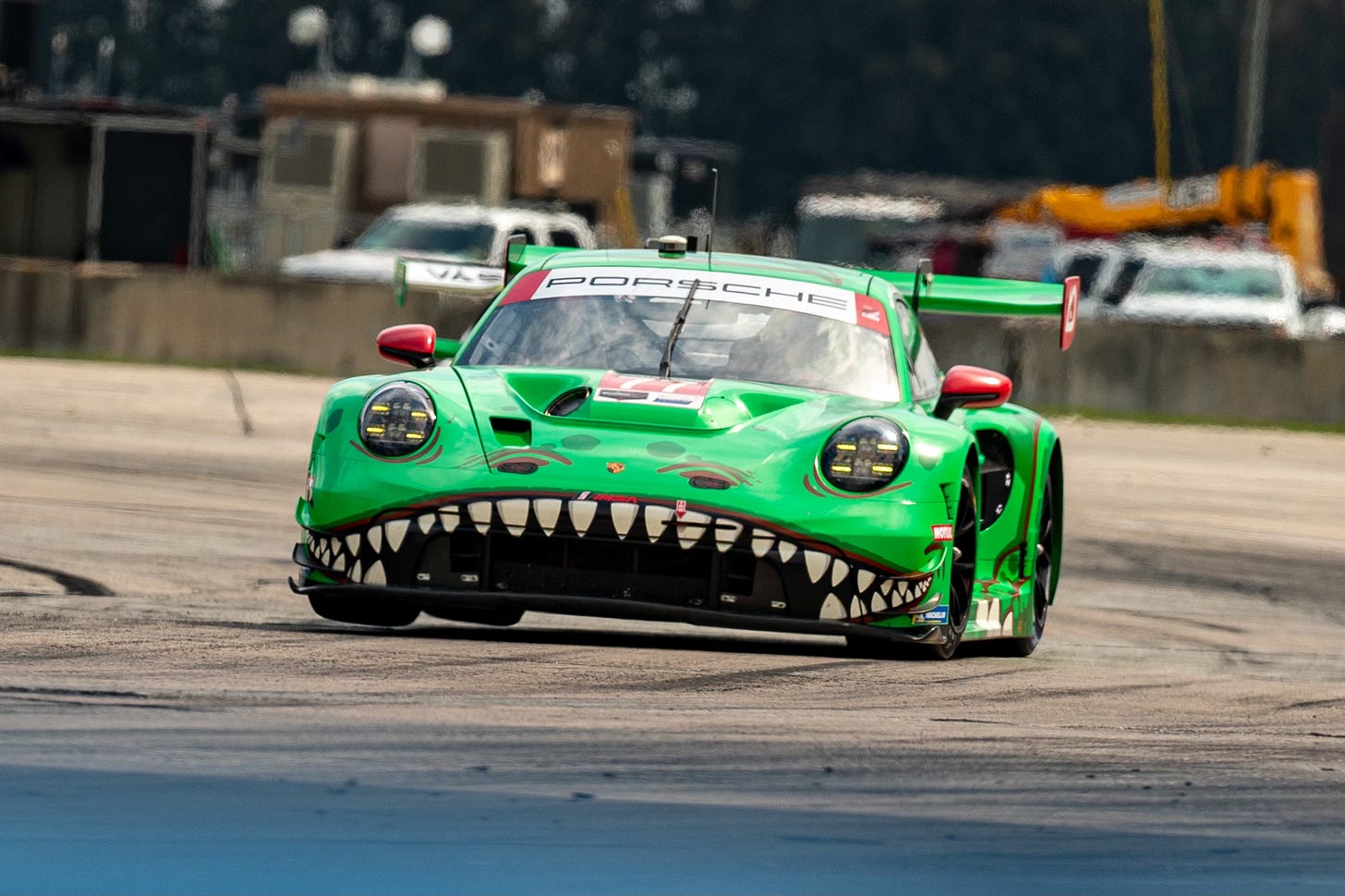Photographing an endurance race is tough
The conditions effect more than just the drivers
Last week, I worked the 72nd running of the Mobil 1 Twelve Hours of Sebring on assignment for the Porsche Club of America. I was there to cover all of the Porsche teams but with a focus on one team, in particular, the AO Racing #77 911 GT3 R, affectionately known as Rexy.
This was my second time at the Sebring 12 hours, but it was my first time as a credentialed media member. I have covered the Rolex 24 at Daytona three times before and understand what to expect at that longer event. Thus, I have a decent strategy for attacking the day-long race without too much fatigue. Sebring presented a different challenge that I didn’t give enough respect to.
I live in Nashville, TN, but I spent a decade living in West and South Texas and a few years in the Middle East. I feel comfortable saying that I know heat and what it can do to you if you don’t prepare. Spring in Nashville has been quite pleasant, with fluctuating temperatures between the low 50s and the low 70s.
When I packed for the race, I considered all the potential scenarios and made sure I had my rain gear, sunscreen, a good hat, and clothing made for hot weather that included sun protection.
Sebring greeted me with bright sun and temperatures in the mid-eighties, which I expected. What I forgot about was the humidity. I worked races at Sebring when I was with PCA Club Racing, but those races were in February. Those events provided me with a great familiarity with the track and its facilities, but they also gave me false comfort because it is rarely humid during those events.
I know how to stay hydrated, but walking the paddock area and the track itself while trying to capture quality images makes it difficult to always carry water. The track did a solid job providing media with water, and whenever I returned to the media room, I made sure to down a bottle, but it was never enough.
My fatigue grew each day as the week went on, and each day’s high temperature eclipsed the day before. To familiarize myself with the entire track during Thursday’s practice and race sessions, I walked a little over eleven miles, and while I tried to drink as much water as possible, it was not enough. Friday brought fewer on-track events and, therefore, an opportunity to take it easy, so I only logged 8.5 miles.
When Saturday (race day) arrived, I was at the track at 6:30 am to get settled, check my gear, and get out to the paddock to capture the cars as they traveled down the narrow lane to the staging area before practice. It is a well-known photo op, as the sun rises behind the cars, making for some glorious photo compositions.
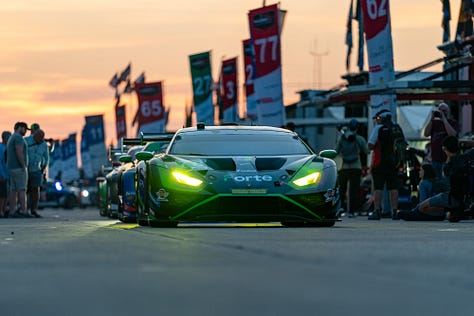
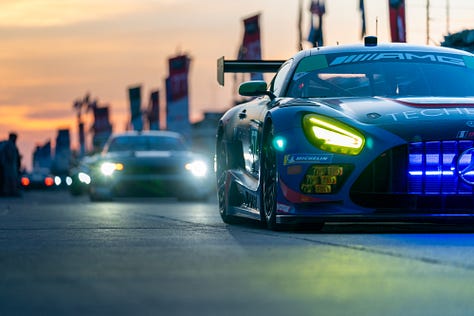
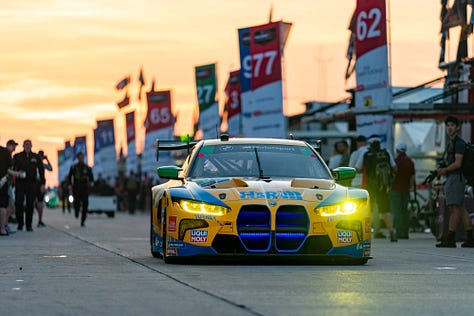
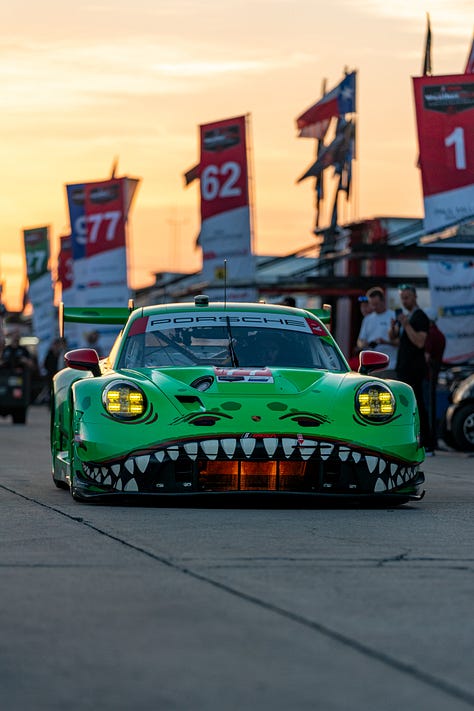
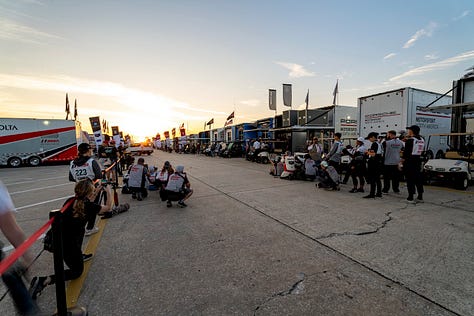
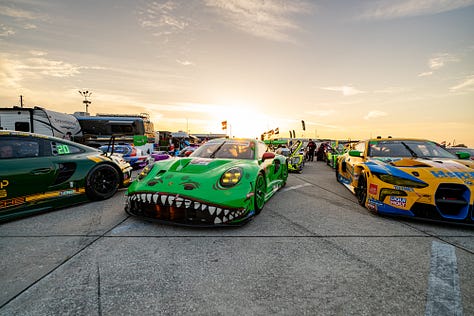
As you would expect, Saturday was the hottest day of the week and the day my fatigue peaked. The race began at 9:40 am, and I spent the first few hours walking the inner sections of the track to cover the corners where most of the early-race jostling tends to happen.
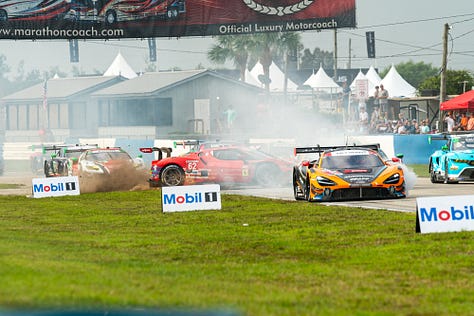
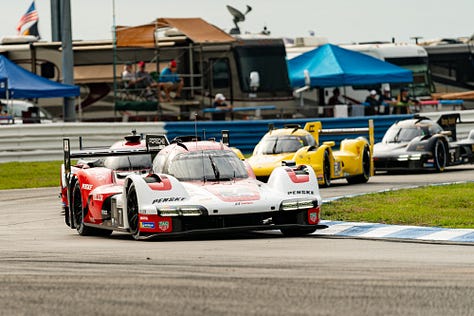
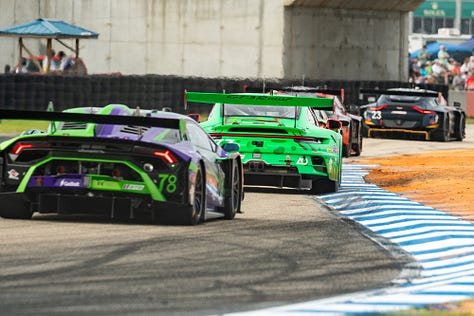
By 1 pm, I was wiped out and needed to retreat to the air-conditioned media room to review what I had photographed, hydrate, and recover. By the time the race ended at 9:40 pm, I had covered another twelve miles, was dehydrated, and exhausted. As I sat in the Winner’s Circle awaiting the podium celebrations for each of the four classes represented in the race, all I could think about was getting back to my Airbnb, taking a shower, and going to sleep. Perhaps that’s why most of my photos of the winners are crap.
Not correctly managing my hydration, sun exposure, and fatigue cost me opportunities to capture some spectacular photos. I still recorded more than required, but my performance would've been sub-par if I had been working for a team or other type of client. That is something I cannot afford to have happen in the future, which is my primary lesson learned from the race.
Endurance racing is always a spectacle of perseverance for the drivers and crew members, but few people think of the toll it takes on those covering the event. Experience can lead to success, but only if you internalize and use the lessons learned from each event to improve for the next one. I will surely use my Sebring adventure this year to ensure I am better physically capable of providing continuous coverage regardless of the elements.
The next race I cover will be a completely different environment from Sebring. For one, it will only be six hours instead of twelve, so I have to provide the same amount of content in half the time. It will also be in upstate New York in the middle of June—a very different environment with its hazards and obstacles.
Every race I cover expands my bag of tricks regarding my photographic skills and from a planning and execution standpoint. Hydration will still be essential for Watkins Glen, but so will bug spray.
To see a complete Sebring photo gallery, check out my website here.



